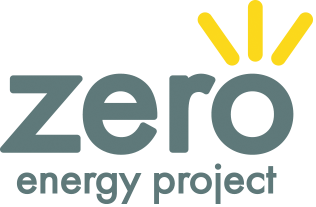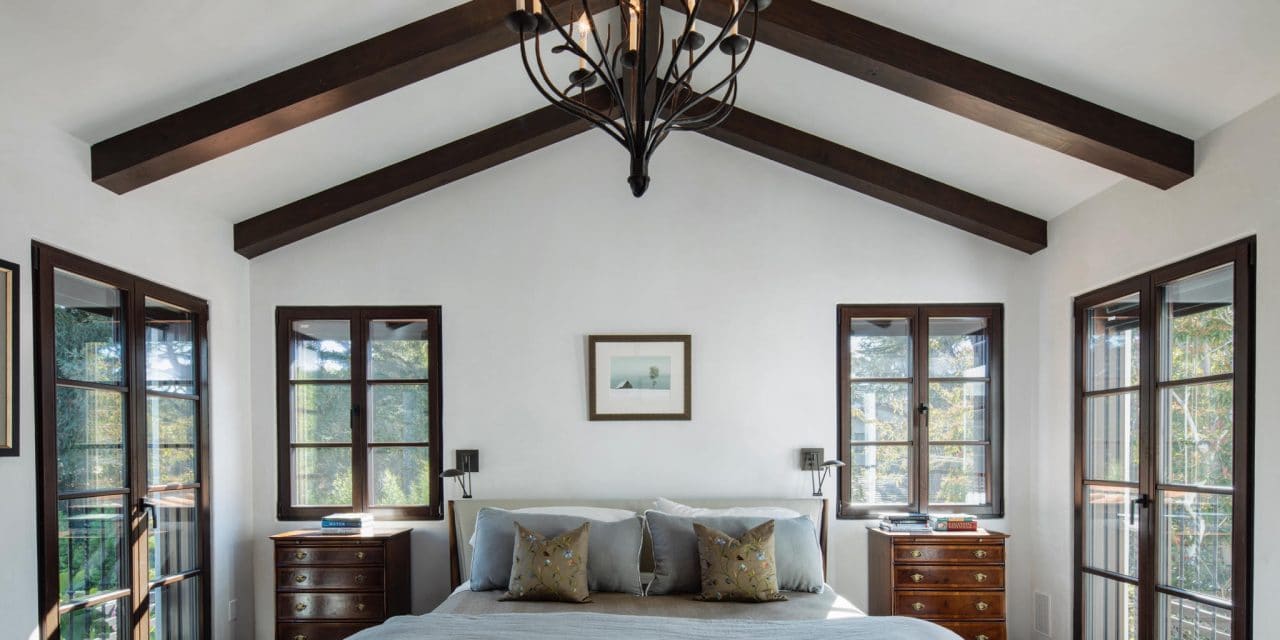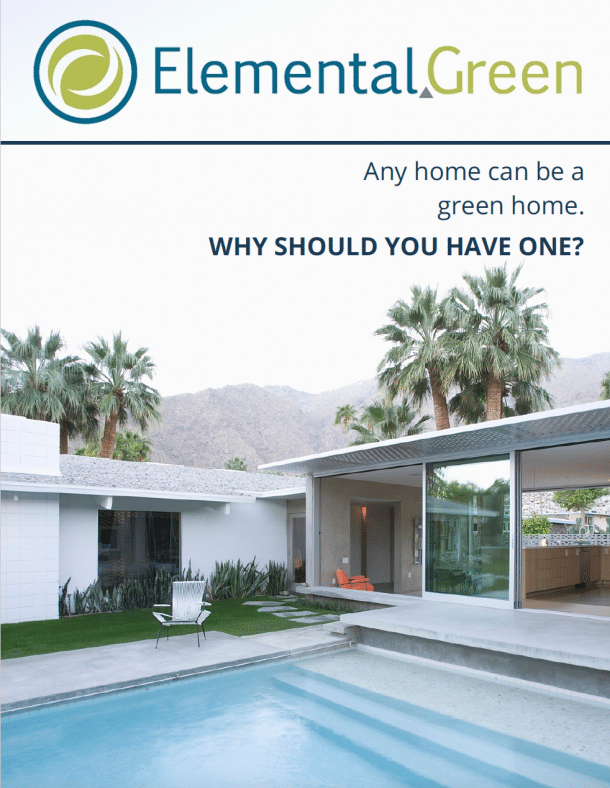One of the main goals for building the Lowell House was to prove you can have it all – sustainability, affordability, health, beauty, and more – and an even bigger goal was to empower others to do the same. Here, you’ll find details about all the various components of building this home. Some you may want to replicate. Some may inspire unique eco-dreams. Whatever the case may be, each piece reveals interesting insights so we strongly encourage you to read through all of them. (Really -even their choice of concrete is an eye-opener!)
Explore the Systems and Building Materials Used for this House
Water
In a traditional house, when one takes a shower, not only is the water drained directly into the sewer, but the heat associated with that water is wasted. When Stuart and his wife started to think about water, they believed they should conserve both the water itself, as well as its heat. To accomplish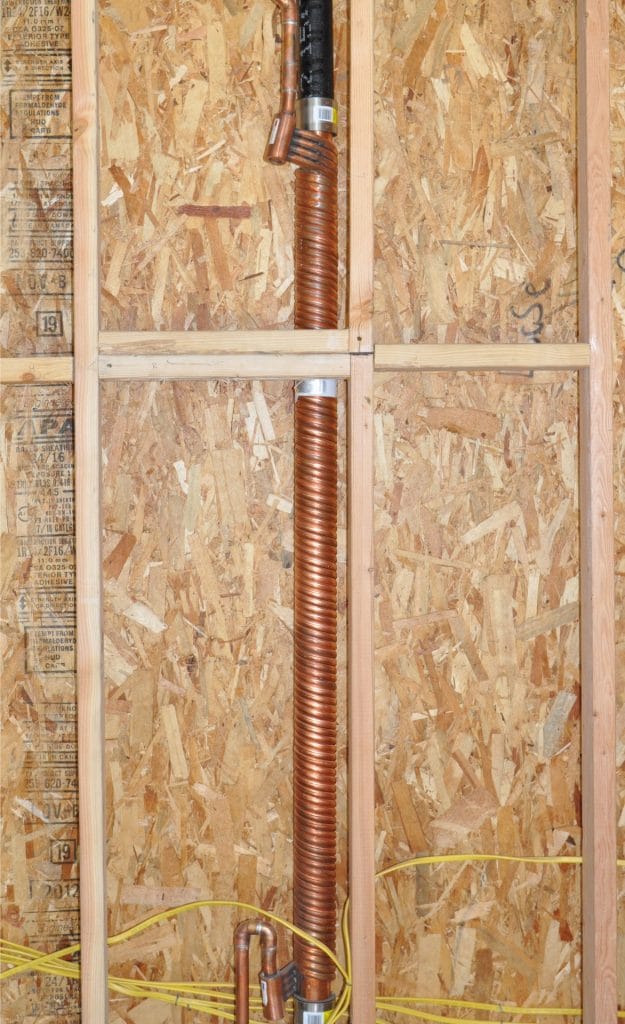 the former, they deployed a passive greywater system to reuse water from sinks, showers, and the washing machine for irrigating the landscape. (To do the same, start by reading our Complete Beginner’s Guide to Greywater Systems.)
the former, they deployed a passive greywater system to reuse water from sinks, showers, and the washing machine for irrigating the landscape. (To do the same, start by reading our Complete Beginner’s Guide to Greywater Systems.)
To accomplish the latter, they installed Power-Pipes. Here is some information from their web site.
“Water heating accounts for 20-25% of the total energy consumption in a typical home and showering demands the bulk of that hot water load in most homes. After use, 90% of the energy delivered to your shower goes down the drain. Water falling down a vertical drain stack does not run down the middle of the stack, but instead clings to the inside wall of the pipe. In a demand hot water recovery (DWHR) application, falling drain water forms a thin film that rapidly imparts its heat to the colder pipe wall. The Power-Pipe® captures much of this heat, then “recycles” it to raise the temperature of incoming cold water. A 60-inch Power-Pipe System, for example, can raise the cold water temperature from 10°C (50°F) to as much as 24°C (75°F), under equal flow conditions. Because the incoming cold water is preheated before going into the water heater and plumbing fixtures, the water heater uses less energy to raise the temperature of the water to the desired level for use, which saves money and increases the effective water heater capacity.“
The couple believes every home should use this system. Payback can be less than 2 years and there is absolutely no maintenance. Also, you may be entitled to federal, state, and local credits or incentives.
Finally, the house was also pre-plumbed for greywater use.
Energy
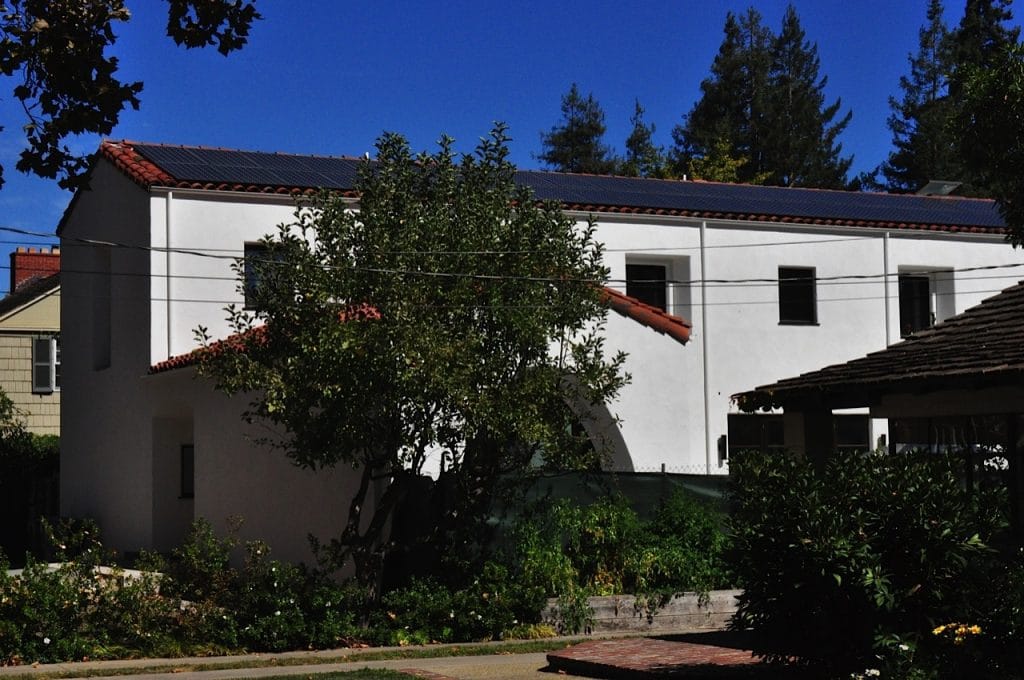
“Prior to building the house, we modeled our expected energy consumption down to the watt. We then installed a PV system matched to that expected energy use,” says Stuart. “Our team (architects, lighting designers, home automation, contractors) was amused at how fixated we were on every watt but so many people that set out to build net zero homes fail because they use more energy than they expected. Why? Several reasons.
- First, they have control systems that run 24 hours/day.
- Second, they fail to properly account for things like computers, DVRs, audio systems, and other electrical loads that draw power 24/7. We modeled the expected hours each device would use in active mode, sleep mode, and off (with phantom energy losses). Yes, most appliances draw power even when off. Every time someone said, ‘Why do you care, it only draws 5 watts,’ we would say, ‘Multiply 5 watts by 24 hours by 365 days. That’s 43,800 wH or 43.8 kWh.’ There were 100 such decisions, which totaled 4,380 kWh, or almost 18% of our expected annual PV production.
- Third, when people purchase items that are more efficient, they tend to use them more. This is called the rebound effect or Jevons paradox. I’ll provide a personal example. In our last house with halogen (50 watt) bulbs, I would walk around turning off all of the lights to save energy. In our new house with LED (9.5 watt) bulbs, I don’t feel as compelled to turn off the lights. We had to wonder if we would use as much energy in the new house with more efficient bulbs? If we left the lights on 5 times as often, we would. Consequently, you have to be aware of the rebound effect.
In the end, Stuart modeled a total annual energy consumption of 21,163 kWh.
Production
HVAC
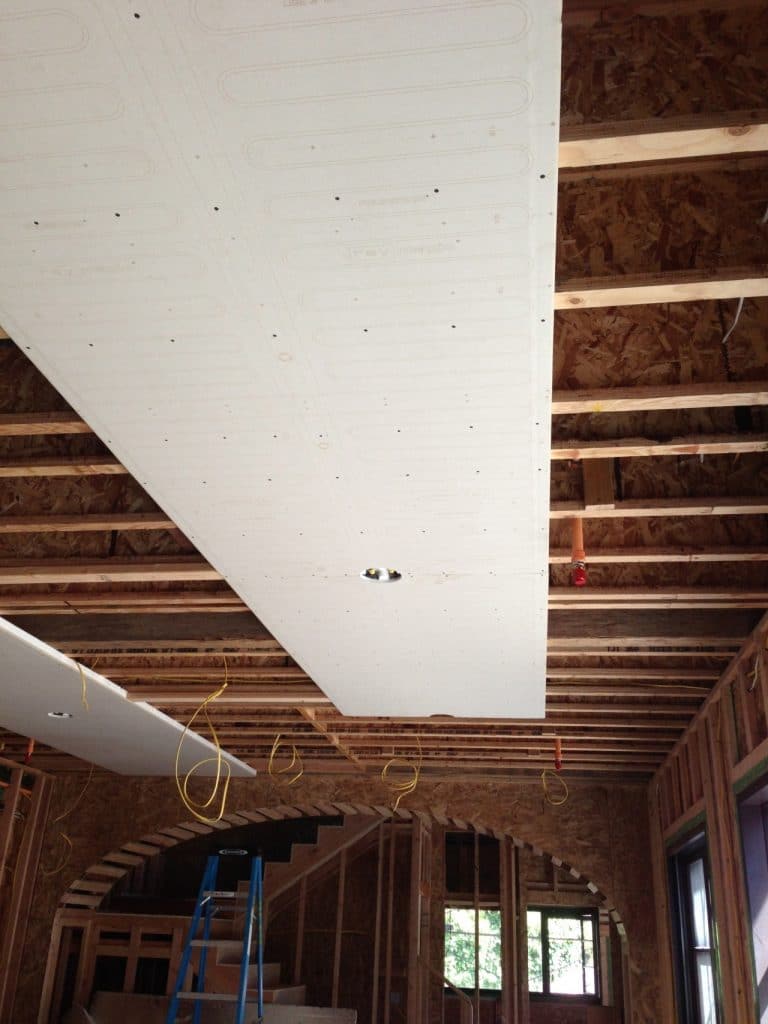 Stuart and Marcella spent more time selecting an HVAC system than perhaps any other decision. Why? Primarily because there are many solutions, but few that were consistent with their goal of optimizing performance, simplicity, efficiency, aesthetics, and cost. Here’s how Stuart describes the process:
Stuart and Marcella spent more time selecting an HVAC system than perhaps any other decision. Why? Primarily because there are many solutions, but few that were consistent with their goal of optimizing performance, simplicity, efficiency, aesthetics, and cost. Here’s how Stuart describes the process:
The first step was mathematical. Prudence and Dan at Integral Impact, using our CAD drawings, site location, and the properties of each construction element (windows, doors, SIPs, interior and exterior insulation, thermal bridges, etc) modeled our heating and cooling needs. Interestingly, you can determine what the expected temperature will be in each individual room based on the time of year, the weather patterns and the materials used in the project. Based on this data, we evaluated the various HVAC alternatives with the help of Integral Impact and Marcus Romani at Meline Engineering. We quickly eliminated forced air. Most forced air systems use furnaces that burn natural gas or heating oil and while natural gas is currently cheap and cleaner than heating oil, our house uses no fossil fuels. All of our systems are electric and powered on a net basis by our photovoltaic system. Furthermore, forced air isn’t particularly efficient, is drafty and can be noisy. We then considered radiant floor heating. This can be an attractive option but is slow to respond, limits floor options, uses pumps and valves that require maintenance, and does not provide cooling without creating a condensation problem. Marcus designed a very elegant system that used fan coils to heat and cool the air in the HRV system with our Daikin Altherma heat pump, but we ultimately became concerned about the complexity of the system. Many energy efficient homes, particularly in Europe and Asia, use mini-split systems, but we couldn’t get comfortable with the aesthetics nor the ability to control the temperature in each room simply. Then we reviewed our initial Mission Statement and revisited the Messana Ray Magic System that Marcus initially proposed. Given our desire to optimize performance, simplicity, efficiency, aethestics and cost, it was the perfect fit.
The panels you see in the picture above are similar to drywall, but they contain piping through which hot and cold water passes. These panels can be placed in the ceiling or the walls and they both heat and cool rooms (and do so faster than radiant flooring). They also do not create condensation when cooling. They are incredibly efficient, thereby reducing operating costs. Also, the panels are silent, don’t move dust around, fit flexibly throughout a house, and are virtually maintenance-free. Finally, the system is networked and can be controlled locally or remotely on a room by room basis. It isn’t the cheapest system one can deploy (forced air and mini-splits are cheaper), but it best met their objectives.
“Most people look at these panels and say ‘Why are the panels on the ceiling? Doesn’t heat rise?'” says Stuart. “The answer is no. ‘Hot air’ rises but heat in physics is defined as energy transferred by thermal interactions, including conduction, radiation, and convection. These panels use radiation to control the surfaces of surrounding surfaces so their location (ceiling or wall) is not critical to their function.”
Like most well-executed projects, team collaboration was critical for the HVAC system. Chris Hyder and Craig Smith at Smith-Hyder Construction, III, Meline, and Sandium worked together closely to design and construct this system.
Additional Details
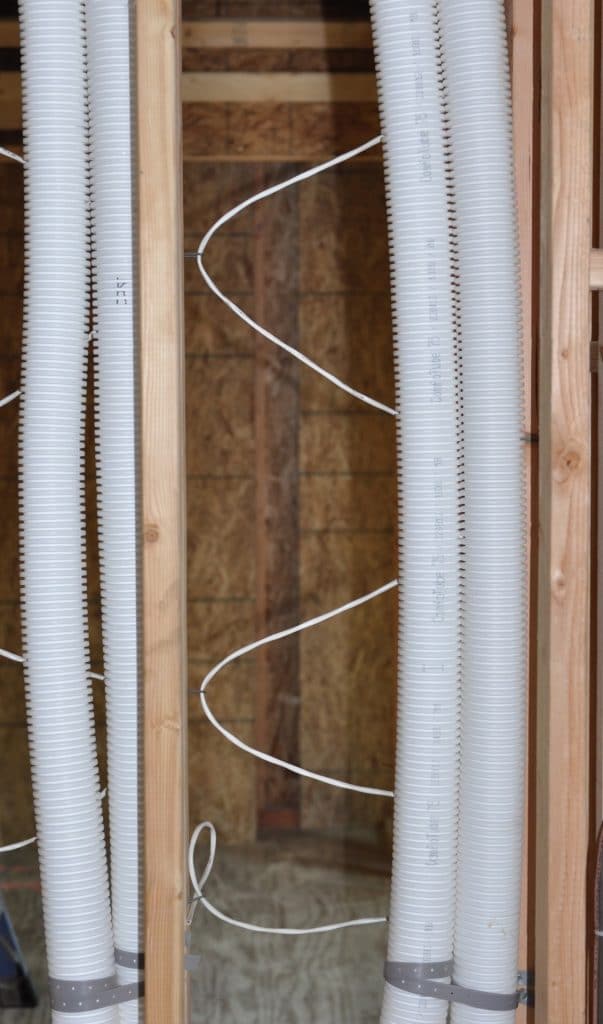
Rather than circulate air through large sheet metal vents (which lose a great deal of energy through leaks, are noisy and take up considerable room), they used 3” flexible hoses with minimal energy loss and no noise.
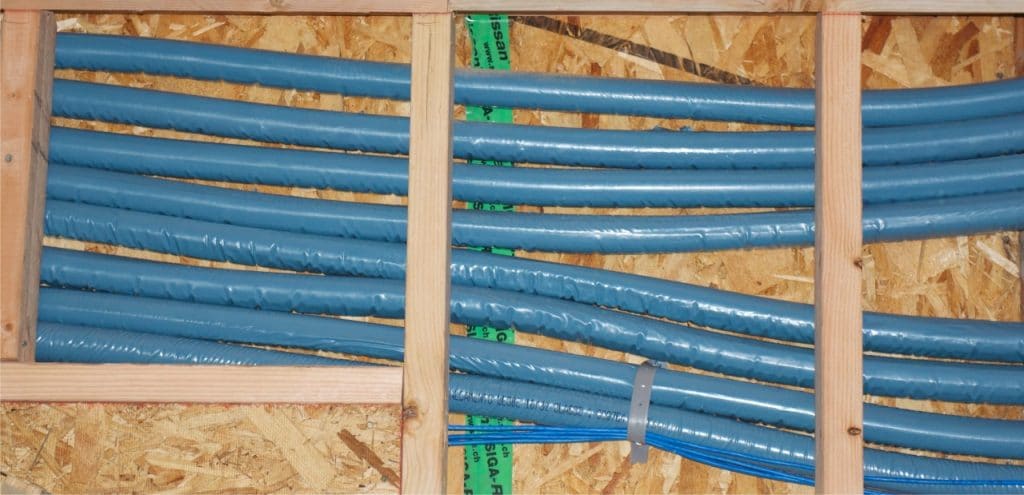
Water is distributed to the radiator panels in flexible, insulated tubes tucked into furred out walls.
HRV
To achieve net zero energy status, air-tightness is essential, but that can lead to poor indoor air quality. To get fresh air with an airtight house, the homeowners installed an HRV (heat recovery ventilator) that constantly refreshes the air in the house by replacing stale/humid air with fresh air from the outside. They also filter the incoming air so their indoor air quality will be better than the outdoor air quality.
Learn more about HRVs in the video below.
Concrete
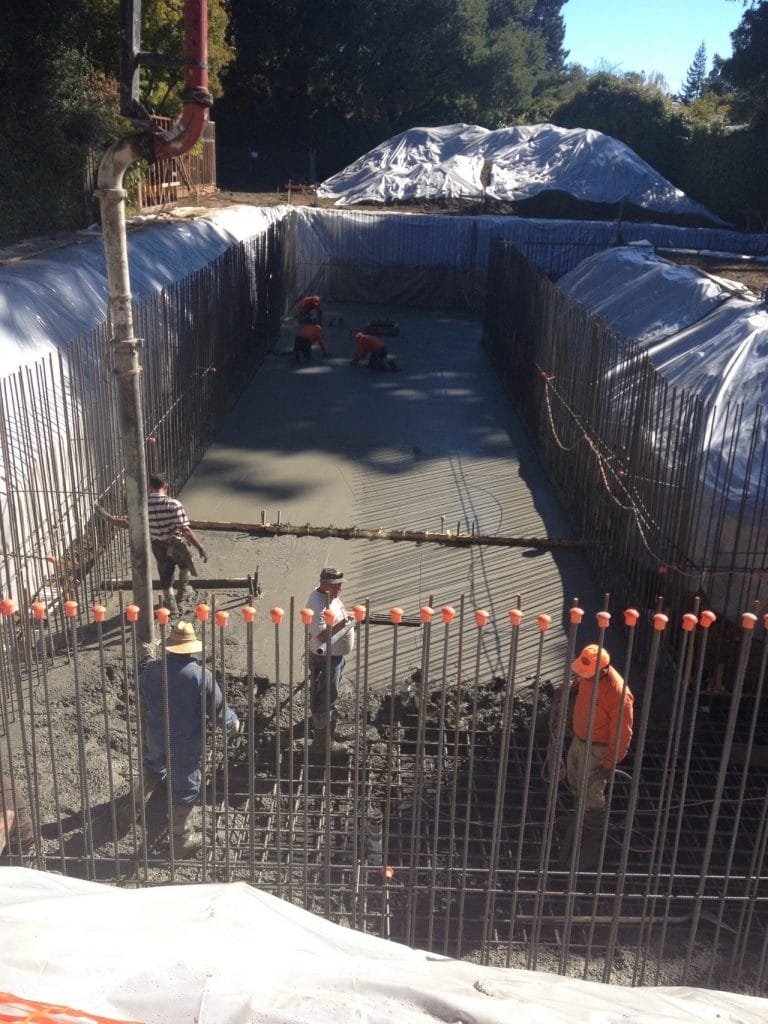
The Lowell House was built using concrete made up of 30% flyash content.
What’s flyash? A byproduct of coal combustion. And when it’s used as a partial substitute for Portland cement, it saves on cement resources and reduces the amount of fly ash going to the landfill.
Concerned about the safety of using something called “coal flyash”? According to the NRDC, there’s no need. They say, “The key to the safe use of coal ash is encapsulation. Encapsulation is the technology that is used at EPA-regulated hazardous waste landfills to make sure that if the toxic waste gets wet, which it does, it is bound at the molecular level into an insoluble compound that will not allow the toxics elements to leach to contaminate underground water sources or surface waters. This is the same technology used in encapsulating flyash in concrete and wallboard. Even if coal ash used in construction is demolished, it still will not leach toxics, because even if pulverized, it is not broken down below the molecular level.”
Wood Forms
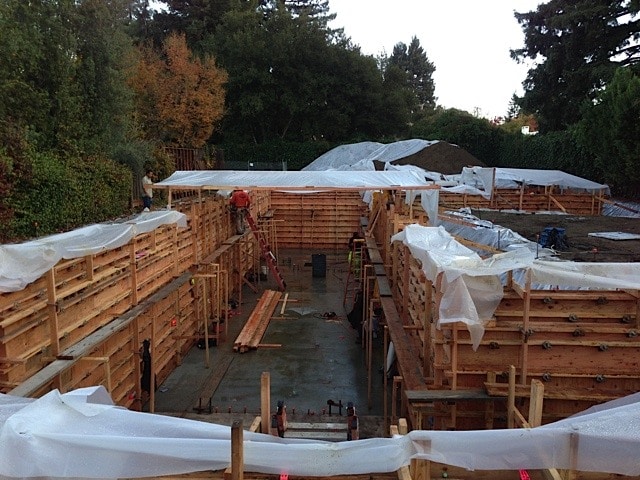
The wood forms were reused on other basement projects. For example, the board formed concrete wall wood was cleaned, planed, and used to create the wood walls in the basement.
SIPs
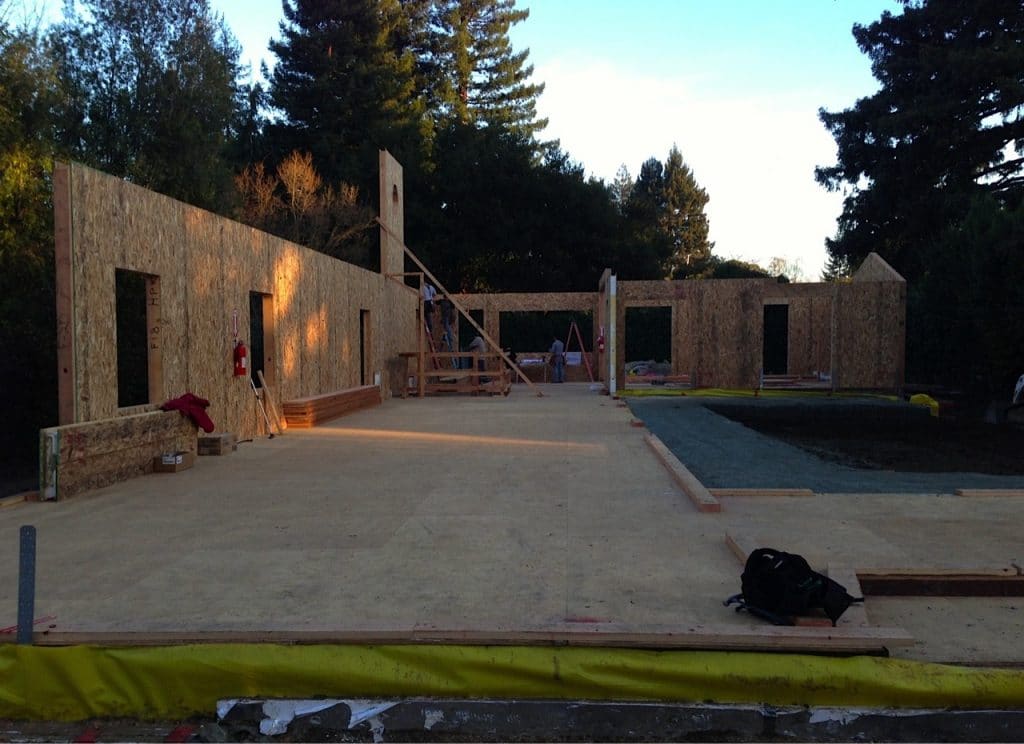
Instead of a traditional “stick-built” home, the Lowell Home uses SIPs for all of the exterior walls and the roof.
Structural insulated panels (SIPs) are one of the most airtight and well-insulated building systems available. They are composed of super-insulating rigid insulation sandwiched between high-performance engineered wood sheathing. SIPs have the following advantages over a conventionally built “stick frame” home:
- Stronger: Up to 66% stronger; making homes even more secure for seismic activity.
- Straighter: Built in a factory with better tolerances than framing “in the field.”
- More airtight, which means more energy efficient: Blower door tests show that a SIP room is 15 times more airtight than its stick framed counterpart with fiberglass insulation.
- More eco-friendly in regards to resources: The major components of SIPs, foam and oriented strand board (OSB), take less energy and raw materials to produce than other structural building systems. SIPs are also fabricated in a controlled environment, allowing for greater efficiency than site-built framing.
- More comfortable: SIPs lead to better air quality and reduced external noise. A SIP home allows for better control over indoor air quality because the airtight building envelope limits incoming air to controlled ventilation. Controlled ventilation filters out contaminants and allergens, and also allows for incoming air to be dehumidified, reducing the possibility for mold growth. Also, SIPs do not contain any VOCs or other harmful chemicals that can affect occupant health. The components used to make SIPs (foam, oriented strand board, and adhesive) meet some of the most stringent standards for indoor air quality.
- Faster construction: The panels can be put together quite quickly so construction time is lower than a conventionally built house, particularly if you include insulation.
Windows
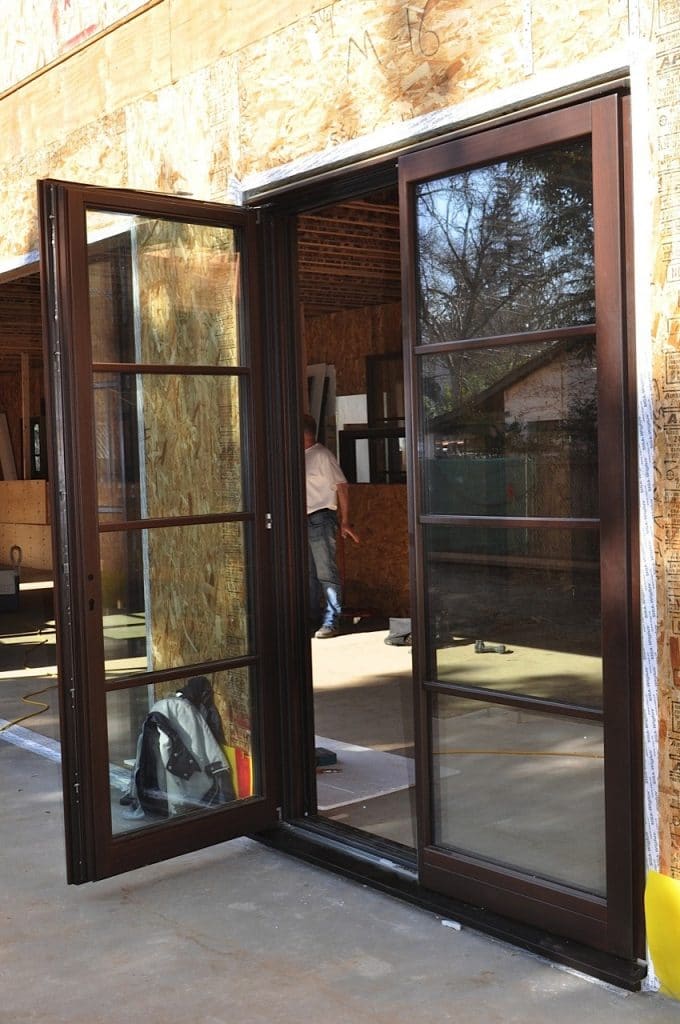
The Lowell House has high-performance, Passive House certified windows. To meet the Passive House standard, windows are manufactured with exceptionally high R-values (low U-values, typically ≤ 0.14 Btu/hr-ft2-°F [0.8 W/m2/K] for the entire window including the frame). These normally combine triple-pane insulated glazing (with a good solar heat-gain coefficient [SHGC]), low-emission coatings, sealed argon or krypton gas filled glass spacer, and ‘warm edge’ insulating glass spacers) with air-seals and specially developed thermally broken window frames.
Learn more about high-performance windows by watching the video below.
Framing
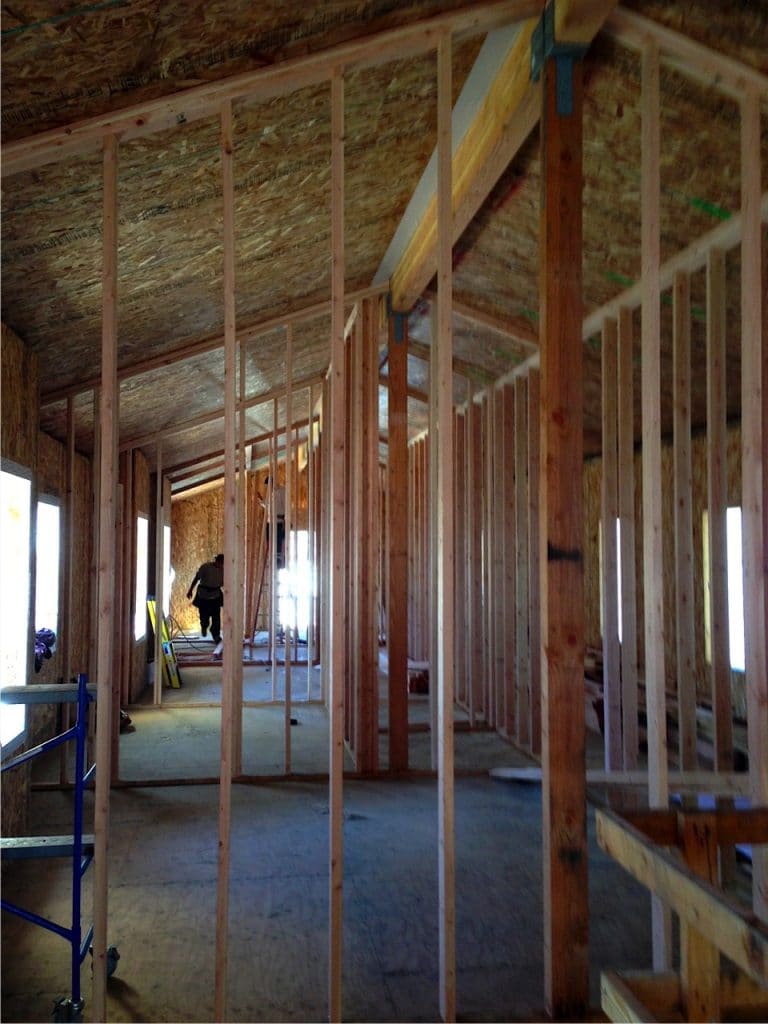
The Lowell House was framed with FSC-certified lumber, which promotes the responsible management of forests worldwide.
Learn more about lumber certifications in the infographic below.
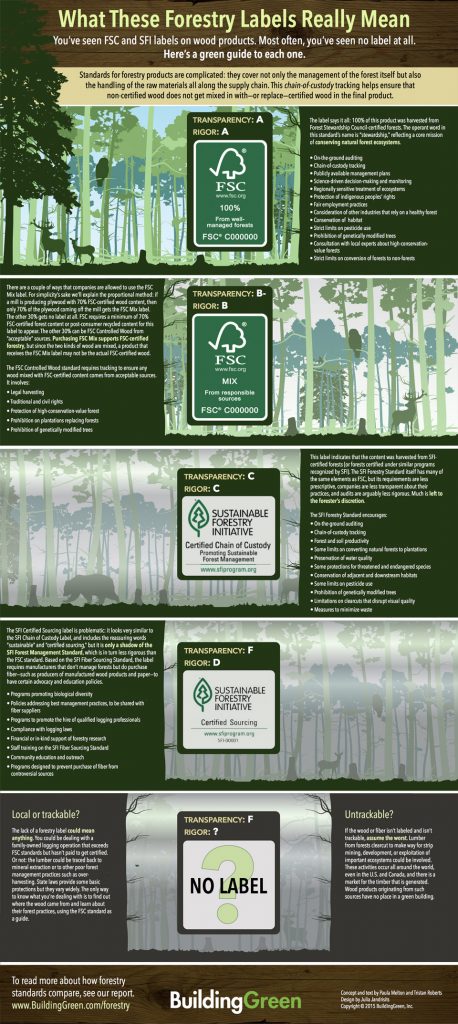
Envelope
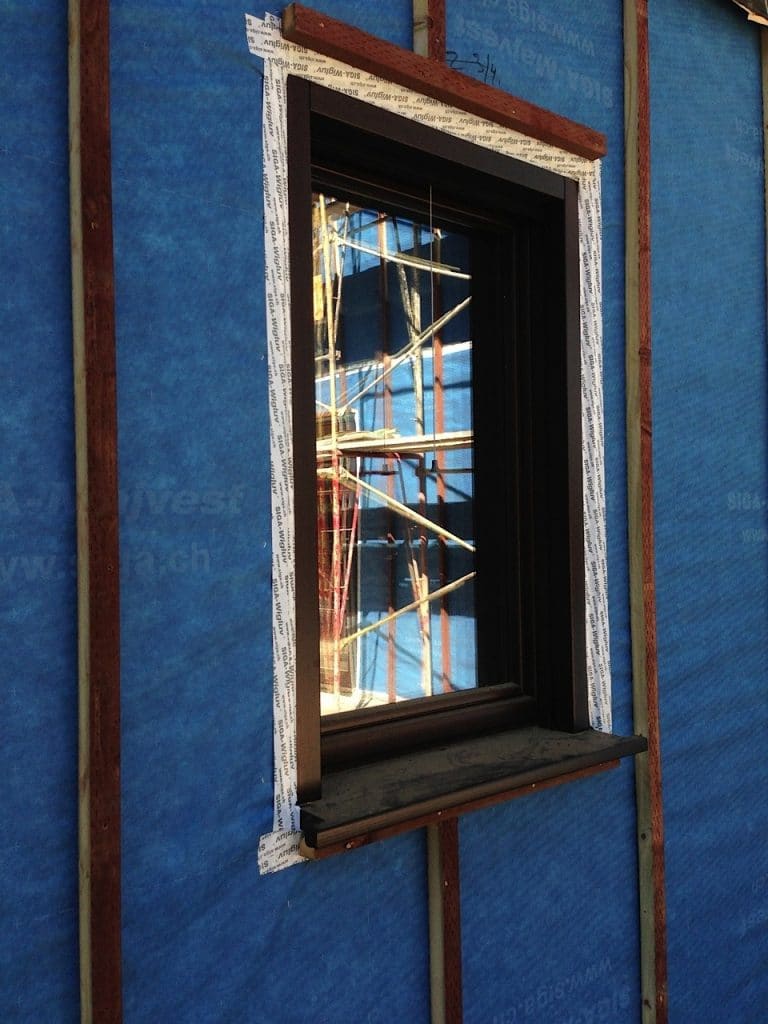
Passive House (PH) construction is focused on having an air-tight envelope. Why is this important? In order to reduce an HVAC’s energy requirements by up to 90%. (It also prevents mold.) The Lowell House used SIGA products to seal windows and doors, seams between SIPs, and as a membrane on the facade. The membrane prevents water penetration but allows the house to breathe, much like Gore-tex. Before backfilling the basement, they also used Stego Wrap as a moisture and vapor barrier.
Exterior Insulation
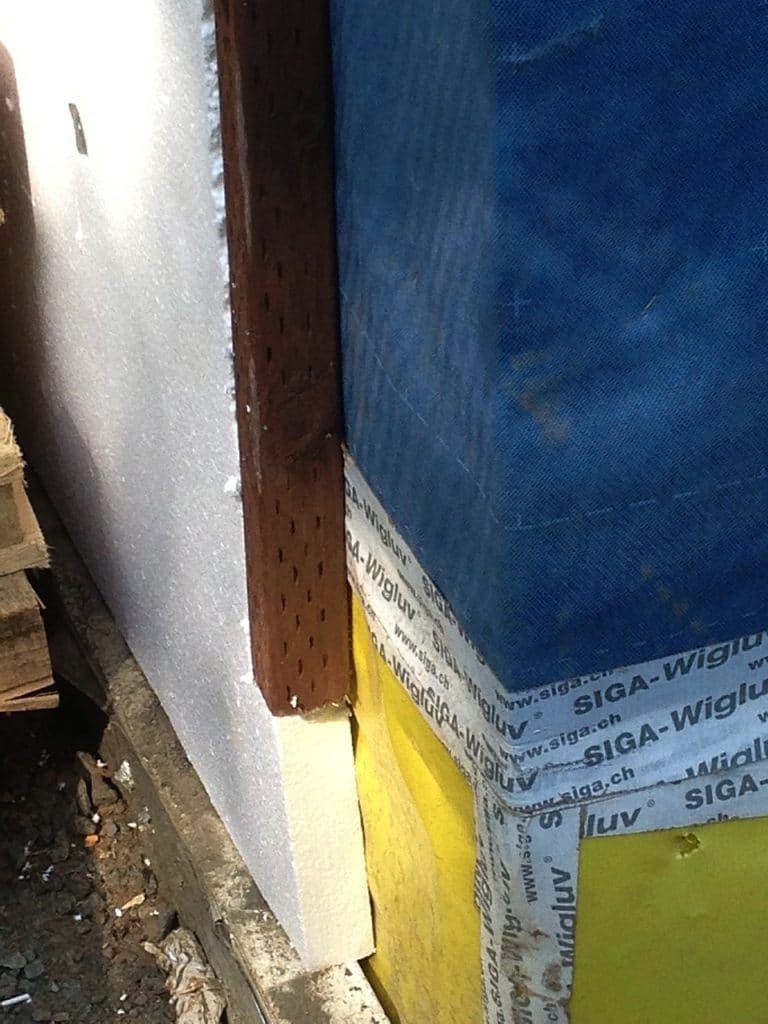
In addition to the SIPs, they installed 1 1/2” of exterior insulation to further insulate the envelope. Before backfilling the basement, they installed 2” of expanded polystyrene (EPS) insulation. EPS was used instead of extruded polystyrene (XPS) because EPS is better for the environment.
Exterior
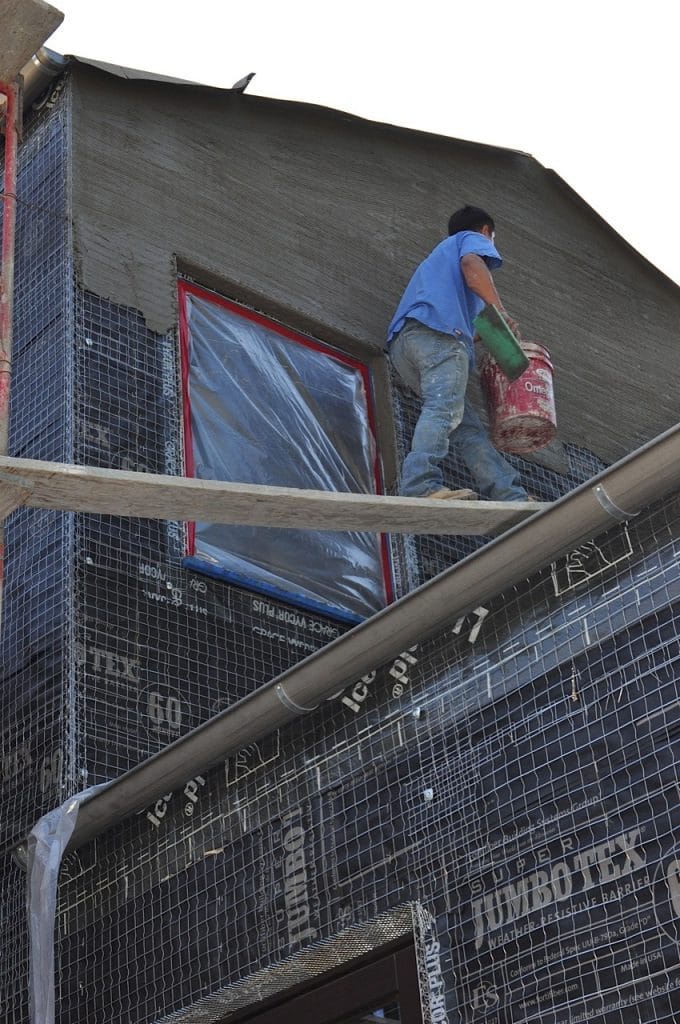
The Lowell House is wrapped in Jumbo Tex to provide weather protection while allowing the building to “breathe.” A concrete “scratch coat” is applied to the wire lath. It is called scratch coat because of the grooves upon which the final layers of stucco plaster will be applied.
Interior Insulation
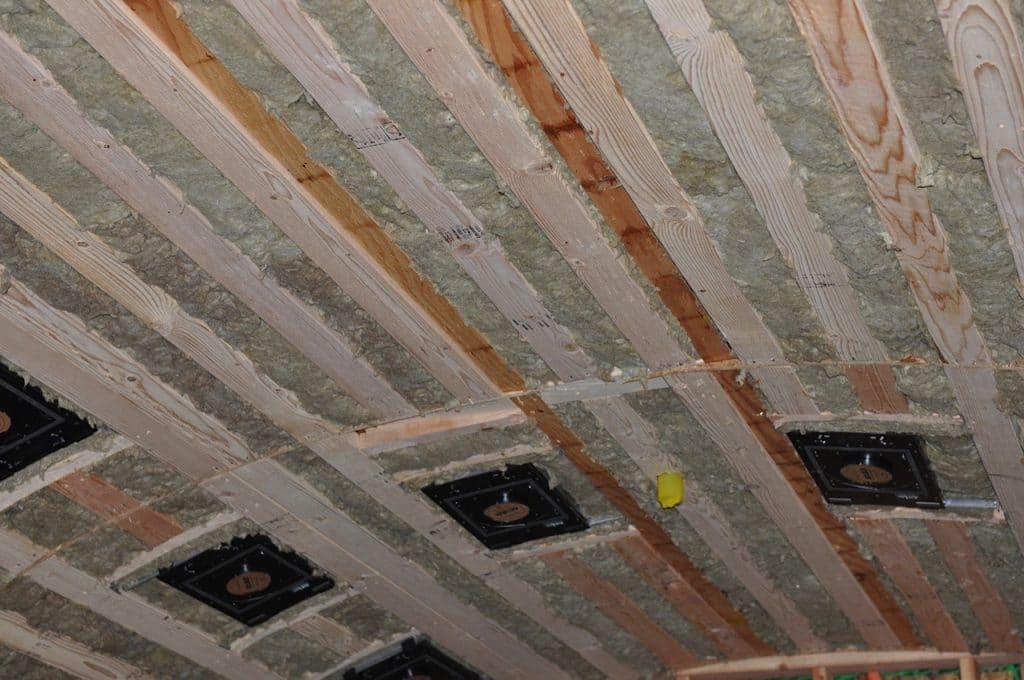
There are many forms of insulation. Inside the house, they placed Roxul AFB and Thermafiber for fire, sound, and heat insulation between floors and where there were thermal bridges through the external walls. This mineral fiber (aka mineral wool) is made from natural and recycled materials and has excellent fire, acoustical, and R-value performance characteristics.
Roofing
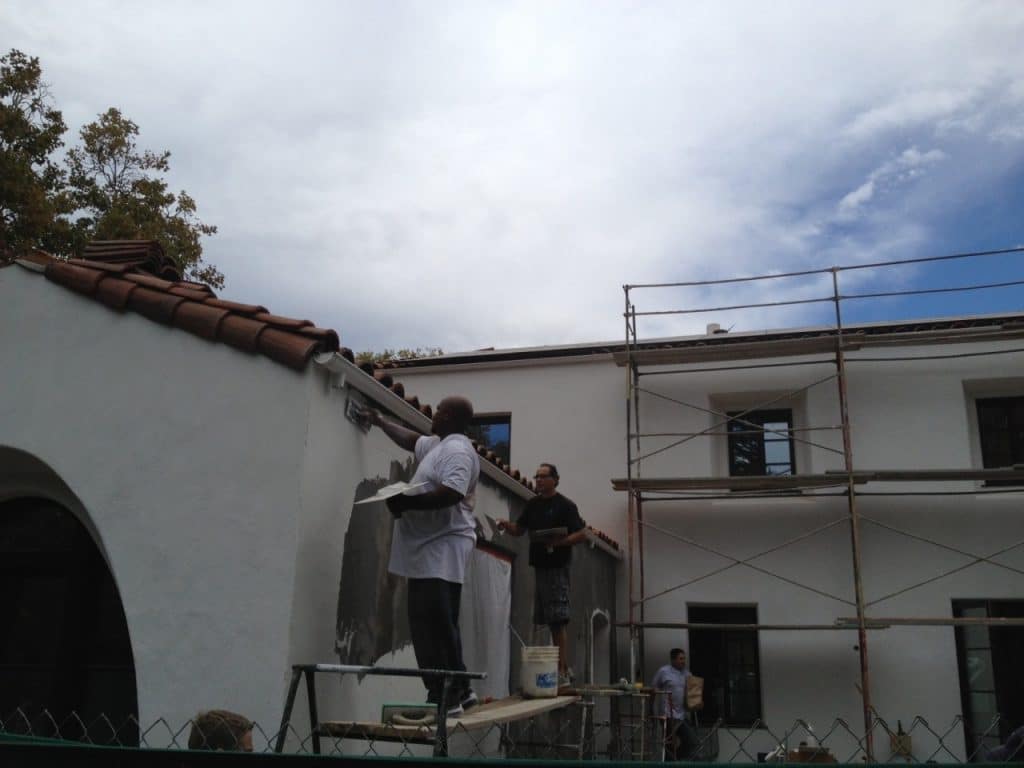
The 1920s hand made cap and pan roof tiles were reclaimed from a school in Monterey, CA and had been sitting in a field less than 30 miles away in Half Moon Bay.
Lighting
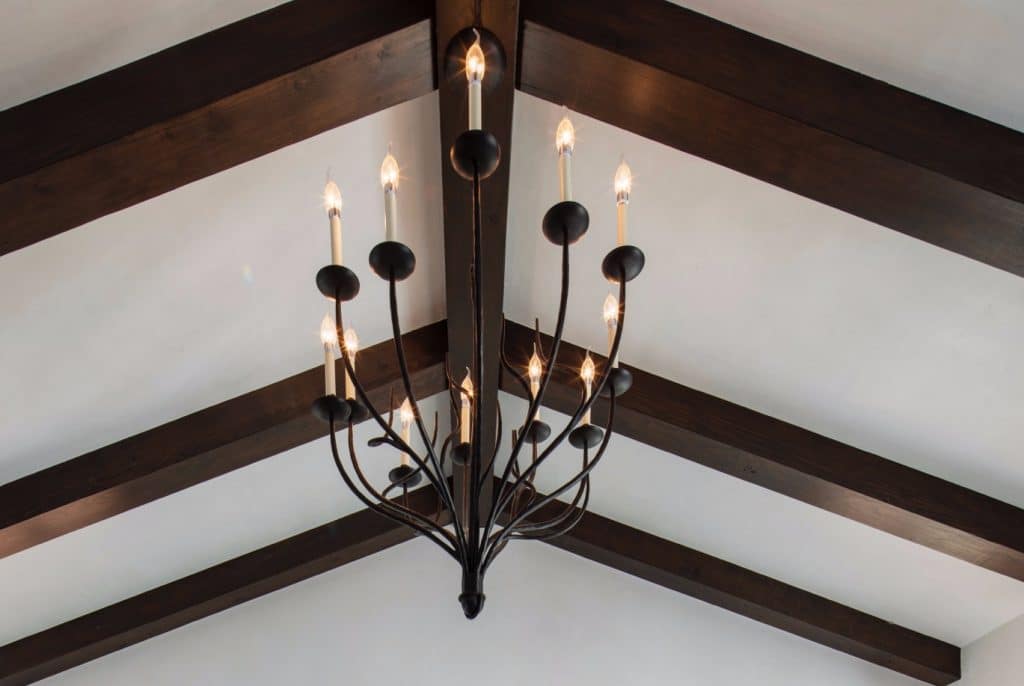
According to Energy.gov, “Compared to traditional incandescents, energy-efficient light bulbs such as halogen incandescents, compact fluorescent lamps (CFLs), and light emitting diodes (LEDs) have the following advantages: Typically use about 25%-80% less energy than traditional incandescents, saving you money. Can last 3-25 times longer.” The Lowell House uses different kinds of LEDs for different applications. The hardest LED bulbs to find at the time were candelabra bulbs. They found most have terrible color rendering, but a small company called Hyperikon makes a great bulb.
As you can see, the Lowell House was built using many outstanding eco-products, but there are many options and the marketplace continues to grow every year. Peruse Elemental Green to see what’s out there! We do the research so you don’t have to.

